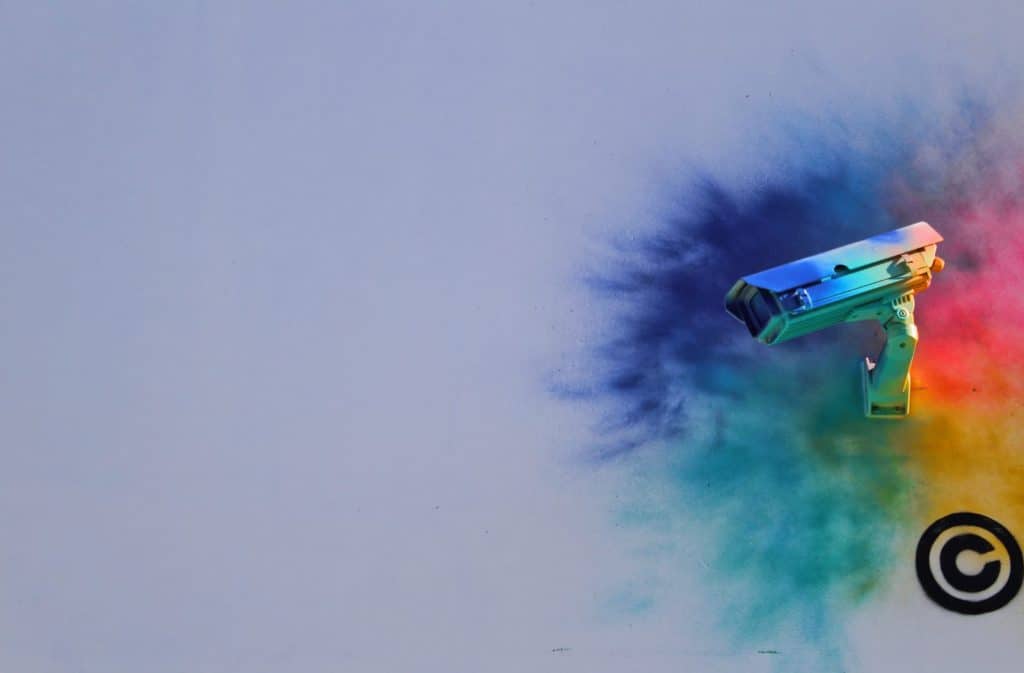Copyright: the basics
What is copyright?
Copyright is a type of intellectual property. Copyright owners have exclusive rights to reproduce, publish and communicate their work to the public.
Who gets a copyright?
In most cases, the original author of the work gets the copyright. There are certain exceptions for employees, commissioned works and government contractors.
Does it apply to everything?
No. Copyright attaches to original literary, dramatic, artistic and musical works, as well as sound recordings and other works (to a lesser extent).
Examples include blog posts, website content, ebooks, price lists, flyers, logos, photographs, musical scores, plays, and so on.
There is no copyright in ideas, so works must be in material form. They also have to be original.
Do I have to register?
No, copyright is automatic in Australia. There is no requirement to register your copyright.
Do I need to put the copyright notice on my work for it to be protected?
No, using the copyright symbol (©) is a useful way of notifying the public that the work is subject to copyright, but it is not required for copyright to exist.
When is copyright infringed?
Someone infringes your copyright when they reproduce, publish or communicate a substantial part of your work to the public without your permission (note: infringement differs depending on the type of work).
What about the 25% rule?
The “25% rule” is a myth that says that if a person changes a work by 25%, they won’t be infringing copyright. This is just a myth. There is no hard and fast percentage rule. If someone copies a “substantial part” of a work, they are infringing copyright. What is a substantial part will depend heavily on the individual circumstances.

How can I report copyright infringement?
There are no “copyright police”. It is the copyright owner’s responsibility to protect their copyright.
You might be able to rely on other legislation to make a complaint to a watchdog body. For example, if the infringing conduct amounts to misleading and deceptive conduct under the Australian Consumer Law, you may be able to make a complaint to the ACCC.
If you are a member of an industry body (for example, Music Rights Australia), they may accept notification of infringing works. Contact the relevant body for further information.
What if the copycat is located overseas?
The exact nature of copyright varies between countries.
Where the copycat is overseas, Australian copyright law will be of little help.
International copyright protection arises from Australia’s participation in international IP treaties.
Where a foreign country is also a member of a treaty, the foreign country will give copyright protection to Australian material.
Importantly, this may not be the same level of protection afforded under Australian copyright law.
How do I find out where a copycat is based?
There are many ways to track down the copycat.
If you have found them online, plug their domain name into http://www.tucowsdomains.com/whois for full details of the owner of the domain name including their name, phone number and address.
If the owner is an Australian entity, search for their official details using ASIC’s databases: http://asic.gov.au/online-services/search-asics-registers/.
What can I do about a copycat?
Assuming copyright exists in your work and it is being infringed by another person, a variety of legal remedies may be open to you, depending on the circumstances of your case. These include search and seizure orders, Anton Pillar injunctions, damages and accounts of profits. You can read more about the remedies available on the Australian Copyright Council website (link in Further Reading section).
To access any of these, however, you must commence legal proceedings, which can be very expensive. In this post, we will focus on practical, less expensive steps you can take to try to stop the infringement without resorting to legal action.
What practical steps can I take to stop them?
Before taking any formal action, you might want to contact the copycat directly to see if you can come to a mutually acceptable resolution without resorting to lawyers.
If the copycat is using an Australian ISP, you can issue a take-down notice to their Internet Service Provider (ISP). You can find the form of the notice in the Further Reading section of this post. To find out who the ISP is, do the domain name search (link in Further Reading section) and look for the Registrar and Name Server names. There should also be an abuse email. Send the notice to that ISP at that email address. Be absolutely sure the content is infringing – if it’s not and you cause the alleged copycat financial damage by reporting them to the ISP, you could be sued.
Facebook, Instagram, eBay and Etsy have reporting mechanisms for reporting copyright infringing material (see links in Further Reading). You will need to provide them with your contact information, a description of the original work, a description of the infringing material, adequate information for them to find the material (i.e. the URL) and declarations as to you being the copyright owner and so on. Be sure to make genuine, considered reports – misleading or false reports may result in your accounts being terminated and even possible further legal action by Facebook or Instagram.
Contact the media. If you are worried about cheap knock-offs ruining your reputation and devaluing your brand, you might want to reach out to some media outlets to expose the copycat. This can have the added benefit of drawing publicity to your brand. If you are a member of Facebook groups or online communities, these can also be a great way to alert potential customers of the knock-offs and get some support for your brand.
BUT (and it’s a bit BUT) be very careful before launching a smear campaign. If you haven’t got the facts quite right, the consequences for you and your business can be dire. Read our article for Women’s Agenda on defamation, ‘cancel culture’ and the perils of fighting back as a business owner here.
Sending a cease and desist letter
A cease and desist letter (also known as a letter of demand) is a letter demanding that the copycat stop infringing your copyright. It is usually sent by a lawyer and threatens legal action if the demand is not met.
The letter might include:
- specify the work;
- put the copycat on notice that you are the owner of the copyright in the work;
- specify how you say they are infringing your copyright;
- refer to relevant legislation;
- demand that they stop infringing your copyright;
- set out what other actions they need to take (e.g. deliver all remaining copies to you);
- give them a deadline to stop by;
- warn the copycat that legal action may follow if the demand is not met; and
- reserve your rights
Be careful if you are drafting the cease and desist letter yourself. Any inaccuracies (for example, referring to incorrect legislation or threatening legal action that is not available to you) will mean that the copycat is unlikely to take you seriously and will not stop copying your work. Making false threats or making letters look like Court documents is illegal and might give the copycat a right to sue you.
If you have limited funds for a lawyer, consider using a template letter of demand (link in Further Reading) and having a lawyer check it for you before sending. You might also be able to access free legal advice from specialist legal centres such as the Arts Law Centre of Australia.

Protecting your copyright in future
Put in place a strong intellectual property protection strategy.
This might include:
- Including the copyright notice (©) on all works. It should look something like this: “© [Year first published][Copyright owner name]”
- Watermarking photographs, images and drawings with your logo and copyright notice
- Including clear Terms of Use on your website and social media pages, as well as any online stores (e.g. eBay, Etsy)
- Using Rights Manager to protect content published to Facebook (link in Further Reading)
- Doing regular searches of Google and social media sites for infringing content
- Building a strong and distinctive brand identity with loyal followers
How can Her Lawyer help me?
We can help you:
- Understand your intellectual property rights
- Determine whether copyright exists in your work
- Determine whether someone is infringing your copyright
- Track down the copycat
- Issue a take-down notice to an ISP
- Submit a copyright infringement report to Facebook/Instagram/eBay/Etsy
- Write a powerful cease and desist letter
- Negotiate with the copycat
- Devise a complete intellectual property protection plan to minimise the chance of anyone copying your work in future.
Book in for an obligation-free phone consult with Her Lawyer to find out how we can help your business.
Further reading
- IP Australia on enforcing your rights: https://www.ipaustralia.gov.au/ip-infringement/enforcing-your-ip/enforce-your-right
- Australian copyright legislation: http://www.austlii.edu.au/au/legis/cth/consol_act/ca1968133/
- Chinese copyright legislation: http://www.wipo.int/wipolex/en/text.jsp?file_id=186569
- Finding out domain name owners: http://www.tucowsdomains.com/whois
- Search ASIC’s databases: http://asic.gov.au/online-services/search-asics-registers/
- Search China’s databases: https://www.chinacheckup.com/products/china-company-verification (tracking down official details of Chinese companies is complex as there is no English-language national database – online services such as China Checkup can assist you in searching the databases for a fee)
- Further information on legal rights of artists: http://www.artslaw.com.au
- Letter of demand template: http://www.artslaw.com.au/sample-agreements/sample-agreement/letter-of-demand-copyright-infringement
- Facebook’s copyright infringement form: https://www.facebook.com/help/contact/1409697672616547
- RightsManager: https://rightsmanager.fb.com/
- Instagram’s copyright infringement form: https://help.instagram.com/contact/372592039493026
- List of apps to help you add watermarks to your photos: http://readwrite.com/2014/01/13/watermark-apps-online-photos/
- eBay’s Verified Rights Owners Program for reporting copyright infringement: http://pages.ebay.com.au/help/tp/vero-rights-owner.html
- Etsy’s intellectual property infringement report: https://www.etsy.com/legal/ip/report
- Business Software Alliance (computer software): bsa.org/Australia
- Australian Screen Association (films, videos and DVDs): screenassociation.com.au
- Music Rights Australia (music in any format): musicrights.com.a



